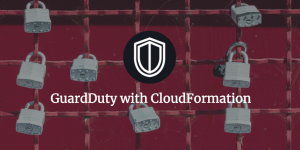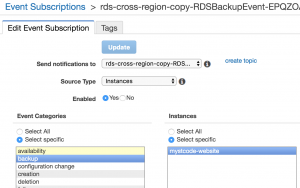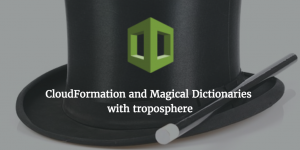Blog category: CloudFormation
Automatically updated docker image for cfn-lint
April 18, 2024 by Paulina Budzoń
If you’re using CloudFormation, you probably know about cfn-lint - a
linting tool created by the CloudFormation team to validate templates against the schema and best practices. Validating
each template before deployment is in itself actually
considered a best practice by AWS.
However, simply using validate-template in the Console or CLI only validates the basic syntax of the template, not the
actual contents and resource specification. That’s where using a linter like cfn-lint
can be helpful to make sure you’re not making any obvious mistakes or going against best practices in your resources.
You can use cfn-lint in a number of ways during development, including simply within command-line, using git pre-commit
hooks or as a plugin to your IDE. All those options, while helpful in day-to-day work, do not establish code quality
standards for your overall codebase. To do that, it’s ideal to include linting as part of CI/CD pipeline and/or
pull/merge-requests approval process.
That is where you can come across a hurdle: cfn-lint does not have an official, up-to-date docker image
Deploying AWS GuardDuty with CloudFormation for Master and Member accounts
May 1, 2018 by Paulina Budzoń

AWS GuardDuty analyses various events happening on your AWS account and can notify you when suspicious activity takes place. Right now, GuardDuty is specific to a region and needs to be enabled in each region you want to monitor (though AWS recommends you enable it in all regions to ensure global actions are monitored). Going through GuardDuty console in every AWS region can be a daunting task, and quite time consuming if you have multiple AWS accounts which you’d like to connect into Master-Member setup. Luckily, CloudFormation supports enabling and setting up GuardDuty detectors, so you can use it to make it a little bit less painful.
Complete code: cross-region RDS recovery
December 28, 2017 by Paulina Budzoń

After posting the previous post on this topic (Copying RDS snapshot to another region for cross-region recovery) , I noticed a lot of people being interested in using the code I provided as an example. Many were not sure how to make use of it, and after a couple of pull requests it became obvious that a complete, fully-working code and CloudFormation template would be a good idea. So, yesterday, I pushed an update to aws-maintenance repository with a fully working code, which you can easily customize via CloudFormation parameters to match your needs.
Enabling global API Gateway stage logging using CloudFormation
July 18, 2017 by Paulina Budzoń
Enabling logging in API Gateway for your stage is fairly easy. You go into the Console, setup a role for API Gateway to
use for logging, find the stage and enable logs. It will enable logging for all methods within that stage. Doing the
same configuration using CloudFormation is not completely obvious though, as
the stage object’s MethodSettings
property seems to allow you to only do that for a specific resource and method.
Using Magical Dictionaries to manage long CloudFormation templates with Troposphere
July 5, 2017 by Paulina Budzoń

When deploying infrastructure with CloudFormation, at some point you will reach a moment when your CloudFormation JSON or YAML file is just too big. It will be too long to get a good overview of what’s in it, manage parameters and all dependencies between resources within the template. Nested stacks may be a solution, but if sometimes you can’t/won' t/don’t use them for whatever reason (for example, it will get to complicated to manage tested stacks or their contents are not reusable between other stacks).
Even if you’re using troposphere to generate your templates, you’ll face the same issue - a very long Python file. Luckily, if you are using troposphere, you’re inherently using Python - which means you can take advantage of it.



